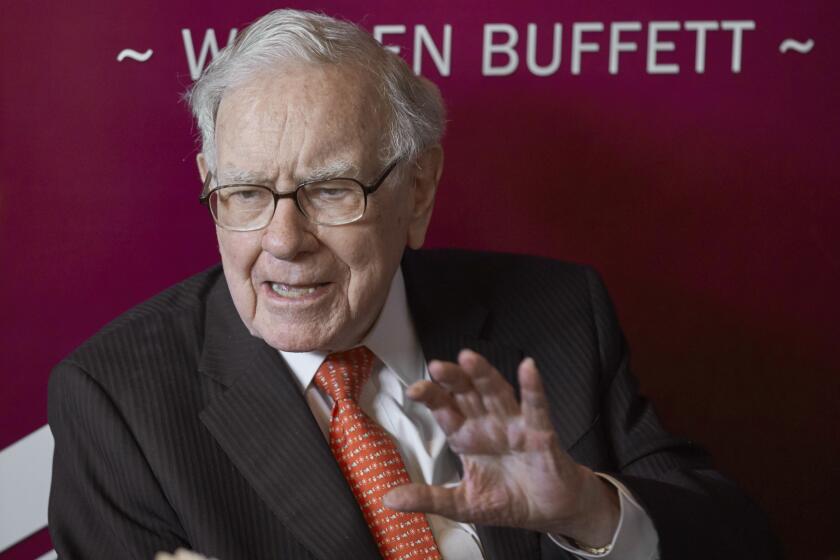How Markets Act in Presidential Election Years
- Share via
A lot has been said and written about the presidential-election cycle, the tendency of stocks to do better in the two years preceding an election than in the two years following one.
If you had invested in equity mutual funds on the basis of this phenomenon, you would have been nicely rewarded. Though the market has been flat for most of 1992, it’s still more than one-quarter higher than it was at the start of 1991.
But how about the weeks leading up to an election, and what about the year or so following presidential elections? How have stocks behaved during these times?
Considering that most diversified stock mutual funds more or less track the broad market, those are questions of interest to many fund investors.
Yale Hirsch, editor of Smart Money, an investment newsletter in Old Tappan, N.J., has studied this relationship and uncovered the following tendencies:
The fourth quarter of election years have been good ones for the stock market, regardless of which party wins. The Standard & Poor’s 500 hasn’t dropped from Oct. 1 through Dec. 31 of an election year since 1948, says Hirsch. That’s eight straight fourth-quarter winners.
Hirsch’s explanation for this year-ending strength: Since most voters backed the political winner, the country is generally happy (at least temporarily), and this optimism is reflected by rising stock prices.
October, occasionally a tumultuous month (as in 1929 and 1987), is normally quiet in election years. Seven of the last 10 election-year Octobers have seen less than a 1% change in the Standard & Poor’s 500, Hirsch says, and the other Octobers were only slightly more volatile.
The period between the last political convention of the summer and the election is particularly telling, Hirsch says.
Of the 15 elections this century in which the incumbent party retained the White House, 13 were foretold by rising stock prices between those two dates. By contrast, the market dropped five of eight times the incumbent party surrendered the Oval Office.
According to this indicator, President Bush had better hope the market is above where it stood when the Republicans concluded their convention in Houston on Aug. 20. That day, the Dow Jones industrial average closed at 3,304.
In the first calendar year following an election, the stock market has performed better under Democrats than Republicans.
Four of the past five Democratic victories were followed by stock market rallies the next year. The average yearly gain: 16.5%, including reinvested dividends.
By contrast, the market rose in only two years following the last seven GOP wins. The average result: a rise of just 1.9%.
The general perception is that the Democrats are bad for the economy and thus the stock market, but the contrary is often the case, says Hirsch.
Stocks also seem to fare better under Democrats when looking at full presidential terms. Starting in 1933, the S&P; 500 has appreciated about 14.2% a year on average under Democrats, according to Charles B. Carlson of the Dow Theory Forecasts newsletter in Hammond, Ind.
During Republican administrations (through 1991), stocks rose at a 13.6% annual clip.
Another point worth noting is the effect of interest rates on the election, especially since 1992 has seen such a dramatic drop in short-term rates.
Paul W. Boltz, an economist with T. Rowe Price Associates in Baltimore, found that declining interest rates generally don’t help the incumbent, even though they would theoretically give a boost to the economy.
Boltz determined that short-term rates clearly fell only once in the past 10 presidential races (in 1960), yet incumbents won five of those contests.
“The message for candidates would seem to be that a rising rate environment enhances the odds for an incumbent’s victory,” argues Boltz. “The reason is simple enough: Interest rates tend to rise during prosperity.”
Is there enough in these election-year theories to build an investment strategy around? To a degree. You might use them to fine-tune your allocations among stock, bond and money-market funds, but you probably wouldn’t want to base major decisions around them.
“It doesn’t make a dramatic difference who wins,” says Carlson. “So many factors affect the markets.”
It’s also worth noting that many of the election-oriented indicators, while intriguing, don’t cover enough years to be really significant.
Gerald W. Perritt, a Chicago investment adviser and mutual fund manager, urges long-term players to stick with a buy-and-hold strategy regardless of who wins in November.
Following some of these political barometers to predict the stock market might place you on the sidelines perhaps one year out of every four, he says.
“And that doesn’t make sense for long-term investors.”
What’s in Store for 1993?
Stocks have fared best in election years and years preceding an election, such as 1991. The following chart incorporates total returns for the Standard & Poor’s 500 index (assuming reinvested dividends) for calendar years 1926 through 1991. Even though post-election years show the smallest gains, they’ve still tended to be profitable. And in 1985 and 1989, the S&P; 500 gained more than 31% each time--underscoring the danger of following presidential-election barometers too closely.
Number of Number of Average Time Period Up Years Down Years Result Election Years 14 2 +13.9% Post-Election Years 7 9 +4.3 % Mid-Term Years 10 7 +7.1% Pre-Election Years 15 2 +16.4 %
Source: Ibbotson Associates, Chicago
More to Read
Inside the business of entertainment
The Wide Shot brings you news, analysis and insights on everything from streaming wars to production — and what it all means for the future.
You may occasionally receive promotional content from the Los Angeles Times.










